The globalization of corn means most people have never eaten a real tortilla
There is nothing quite like a good tortilla. Unfortunately, almost no one in the US has ever had a good, authentic tortilla—handmade, still warm from the comal it’s been cooked on, from landrace corn grown, nixtamalized, and ground nearby, often by the very same hands making the tortillas. A tortilla speaks of a particular soil, a variety of corn, a certain landscape, and the community that have been its guardians for millennia.
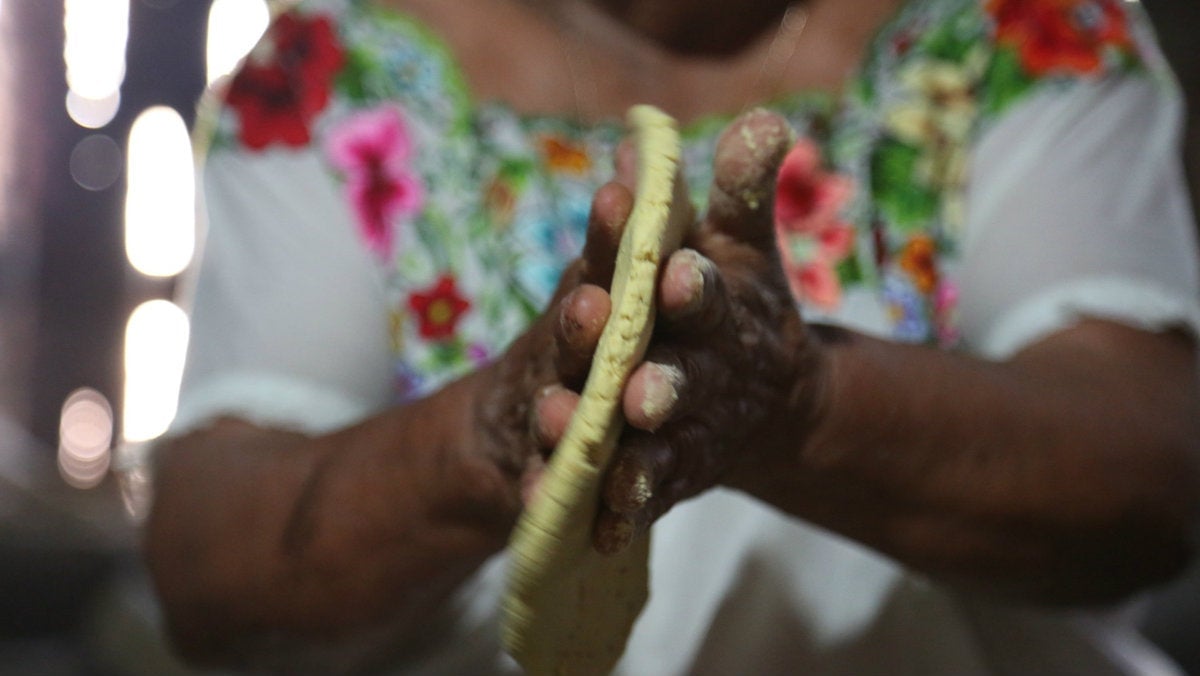

There is nothing quite like a good tortilla. Unfortunately, almost no one in the US has ever had a good, authentic tortilla—handmade, still warm from the comal it’s been cooked on, from landrace corn grown, nixtamalized, and ground nearby, often by the very same hands making the tortillas. A tortilla speaks of a particular soil, a variety of corn, a certain landscape, and the community that have been its guardians for millennia.
But despite being a staple of Mexican cuisine, culture, and history, finding a fresh tortilla made from landrace corn—domesticated, heirloom varieties—is surprisingly difficult in the nation’s capital, and until recently almost impossible outside of Mexico. However, Jorge Gaviria, who founded Masienda in San Francisco in 2014 and began supplying restaurants like Cosme and Taco Maria with landrace Mexican corns, is about to launch Masienda Bodega’s new line of tortillas in 200 different stores across the US, including Whole Foods.
“The whole reason we’re launching Masienda Bodega is to democratize the access to landrace corns,” Gaviria explained.
The 30,000 to 40,000 tortillas Masienda will make daily will be made from not only landrace corns imported from several states in Mexico, but also corns farmed organically and sustainably in the US corn belt, a region historically dominated by GMO corn. The company’s goal is to “improve regional ecosystems dedicated to corn production with every pack sold.”
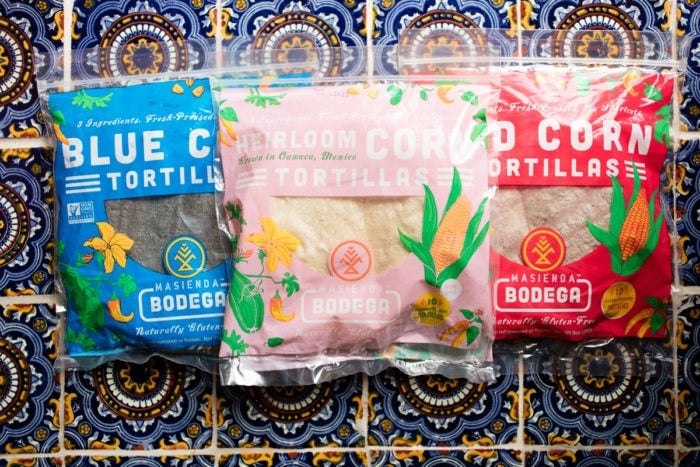
Corn, arguably one of humanity’s greatest agronomic achievements, originated in Mexico. It’s now the most widely produced crop in the world, and while the vast majority of this is industrialized, super high-yielding genetically modified or modern hybrid corns dependent on heavy pesticide and herbicide use, in Mexico there are still at least 59 recorded unique native landraces.
Corn is unique because it evolved entirely thanks to ancient meso-American farmers who saved and selected different kernels over thousands of years of domestication to produce varieties not only suited to Mexico’s many different ecosystems, but also for purposes including their specific colors, textures, flavors, and ceremonial uses. As a result, there is now a plant species with tremendous diversity.
Preserving these ancient varietals is essential, not least to ensure its future sustainability, but also because “this goes beyond food; reduced diversity takes away a part of civilization’s identity and traditions,” says Martha Willcox, geneticist and landrace maize improvement coordinator at the International Maize and Wheat Improvement Center (CIMMYT). “Traditional landraces are the backbone of rural farming in Mexico, and a source of tradition in cooking and ceremonies as well as being an economic driver through tourism. They need to be preserved.”
Masienda’s tortillas will be the first commercially available, fully traceable landrace corn tortillas to enter the thriving US tortilla market. And making them using the ancient, pre-Columbian nixtamal process—cooking the corn in slaked lime, or cal, to make the calcium, amino acids, and vitamin B3 in every kernel bio-available for humans—will bring them even closer to authenticity. But will popularity and accessibility follow suit?
State of the tortilla in Mexico and the US
US supermarket demand for tortillas has been steadily rising, due to the burgeoning Hispanic population, the worldwide Mexican food trend, the growing gluten-free market, and the availability of low-cost corn.
But the popularity of the tortilla masks serious polemics in the world of corn that explain why Masienda wants to enter the marketplace. The Mexican multinational Gruma, founded in 1949, currently dominates the tortilla market in Mexico and the US, although their heavily processed products—including Maseca corn flour and Mission and Guerrero brand tortillas in the US—concern people like Rafael Mier, founder of the Mexico City-based foundation Tortilla de Maíz Mexicana, which lobbies to improve the quality of the tortillas we are eating.
Mier recently spoke at the 7th National Heirloom Expo in Santa Rosa, California, to call for new norms in both Mexico and the US, beginning with a legal definition of the words “corn tortilla” designed to prevent further misrepresentation of the Mexican staple, which Mier believes amounts to a form of cultural appropriation.
“It’s crucial we differentiate between a nixtamalized corn tortilla and other corn-based products which are not tortillas,” Mier says. Like many, he worries that there are “whole generations of young Mexicans and Americans who have never tasted an authentic tortilla, made from nixtamalized landrace corn, and who think that a tortilla made from Maseca is how corn tastes.”
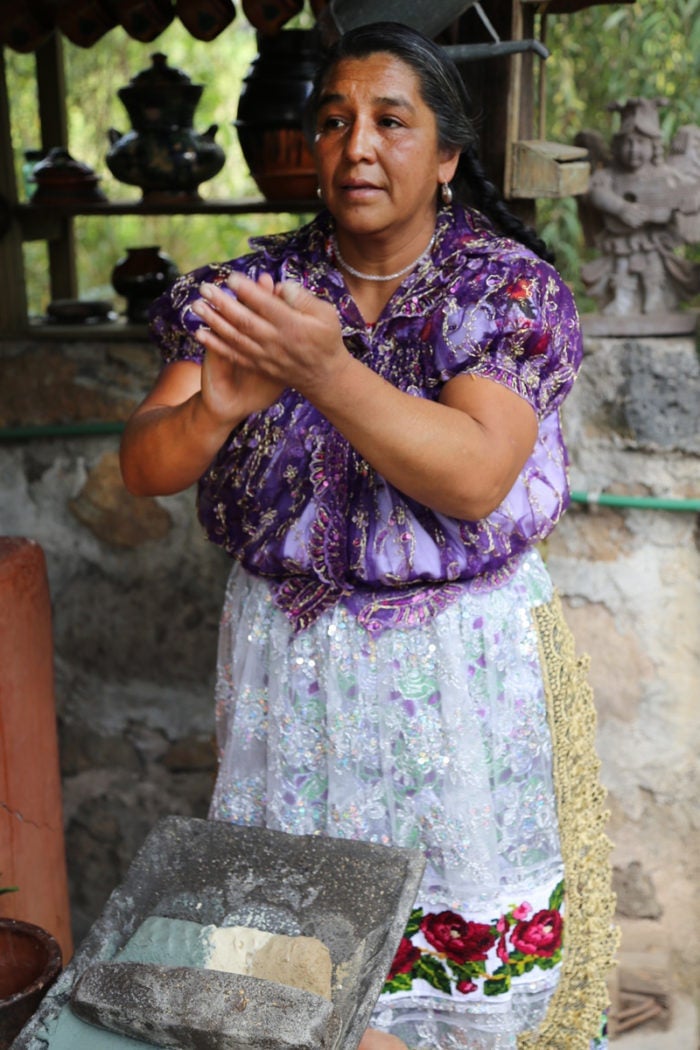
Mexico imported around 13 million tons of corn in 2016 from the US, expected to increase to between 16.8 and 19.2 million tons in the 2017-2018 harvest. The vast majority of this is genetically modified yellow corn, ostensibly for industrial use and animal feed, but there have long been allegations of unscrupulous use of cheap imported yellow corn in processed food, popcorn for cinema chains, and tortillas by large multinationals. Gruma’s 2016 annual investors’ report notes that the company may have inadvertently bought GMO corn that hasn’t been approved for human consumption and that this corn may have found its way into its products. It is no surprise, therefore, that a recent report found that 90.4% of tortillas in Mexico contain GMO corn. Gruma’s tortillerías can be found all over Mexico, from the tiniest villages in rural Yucatan to the vast cities of the industrial north; they even offer financial support to anyone wanting to open one. Their “just add water” concept made instant masa accessible to busy working urban mothers who still wanted to prepare fresh tortillas, but has now become commonplace in both rural and urban kitchens.
While GMO corn remains illegal to farm in Mexico (though not to import), farming modern hybrid corn is also a subject of huge controversy in Mexico. Hybrids are widely thought to be the only way Mexico can produce the 23.5 million metric tons of white corn the country needs annually, because as Martha Willcox explains, “when you industrialize, you have to have something that’s more homogenized.”
Many scientists and farmers of landrace corn fear that the increasingly widespread planting of hybrid varietals (using seed from Monsanto or Pioneer, for example, and their corresponding chemical fertilizers and pesticides) is a major threat to not only the purity of landraces, soil quality, and the entire Mexican ecosystem, but also the Mexican palate.
“We only have to look to the US to see where hybrid corn ultimately leads,” Willcox says. “Some people would argue it’s a marvel that three states can supply the whole of the US with corn, and still have enough left over to export, but it’s a very yield-driven mentality.” She adds that the consolidation of the corn industry has narrowed the genetic base corn growers are working with, but because “we are facing an unknown future, there needs to be a broader genetic base available in plant breeding.”
And of course, preserving a broad genetic base also preserves the huge variety of flavors and textures found in Mexican landraces.
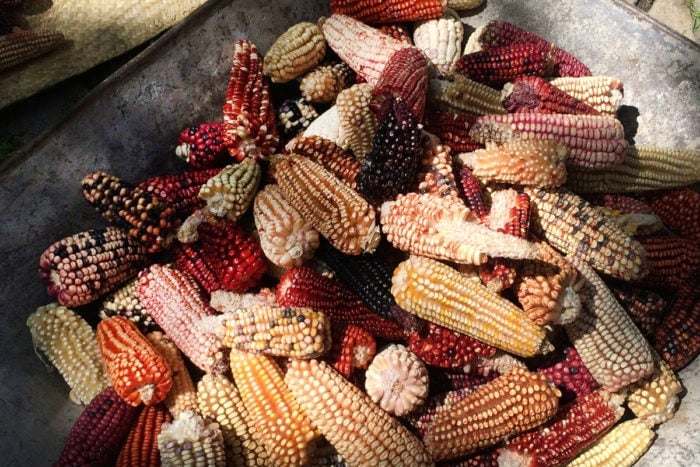
“New hybrid varietals have been created specifically for certain conditions,” says Cornélio Hernández Rojas. “[Seed companies] have homogenized everything, from the plant’s height, to its taste and color. These companies only care about quantity, not preserving flavor.”
Hernández is a smallholder and anthropologist who lives in Ixtenco in the south-central state of Tlaxcala, where 95% of smallholders still farm landrace corns. For him, the idea of a pozole or tamal made from hybrid corn is unthinkable. “These hybrids won’t allow you to enjoy Mexican food—everything would taste the same!” he says.
Capitalizing on supply and demand
While finding a tortilla made from rare landraces is relatively easy in Ixtenco, it is much more difficult a couple of hours’ drive east in Mexico City—and expensive. There are of course traditional tortillas made at some of the capital’s top restaurants, such as Pujol (which sources its own corn) and as of a few months ago, Maizajo, a new landrace corn tortillería and research center in the trendy neighborhood of Roma. But the vast majority of tortillas are industrially made, not least because of the prohibitive cost of landrace tortillas—15 pesos for a dozen Maizajo tortillas, compared to around 13 pesos for a kilo of Maseca cornflour tortillas.
Tortillas in Mexico are a staple, to the point that the government has intervened when the price creeps too high. The divide between what the average Mexican can afford to spend on a kilo of tortillas and what it costs to produce a kilo of landrace corn is currently just too wide, limiting the market for many landrace corn farmers to chefs in both the US and Mexico who are willing to pay a premium for its flavor profiles and textures—and people who shop in Whole Foods and see premium tortillas as a gourmet luxury, rather than a daily necessity. For everyone else, it’s the hybrids—at least until Mexico’s landrace farmers are able to increase their yields in a way sustainable to both the land and themselves.
“Mexico has an enormous number of landrace corn farmers,” Willcox says, “but they don’t have a way to connect to the market. The idea is to get them connected and keep them connected, without it becoming something that only Big Ag benefits from.”

Willcox hopes that the growing US interest in landrace corns will continue to “reverberate in Mexico” and that Maizajo is hopefully the first of many tortillerías focusing on landrace corns—which will eventually improve the efficiency of the supply chain and in turn the availability of good tortillas both sides of the border.
Willcox also encourages US-based companies like Masienda to not only focus on Mexico, but to seek out the few remaining US landrace corn farmers. “Instead of trying to replicate in the US what we have in Mexico, foment what you have in the U.S. that has almost died out,” she says.
The future of ancient corn
Eating a tortilla made from landrace corn, whether Mexican or US-grown, from Masienda, Maizajo, or any of the companies that will inevitably follow in their steps, is a communion of sorts; receiving it, freshly made from a comal or out of a vacuum sealed pack, acknowledges the millennia of work that has led to that point, to that particular tortilla tasting that way, having that color and texture and reflecting that particular soil. A single tortilla can be a stark reminder of the world’s fragile biodiversity, humanity’s role in shaping it, and the imperative to try and protect it.
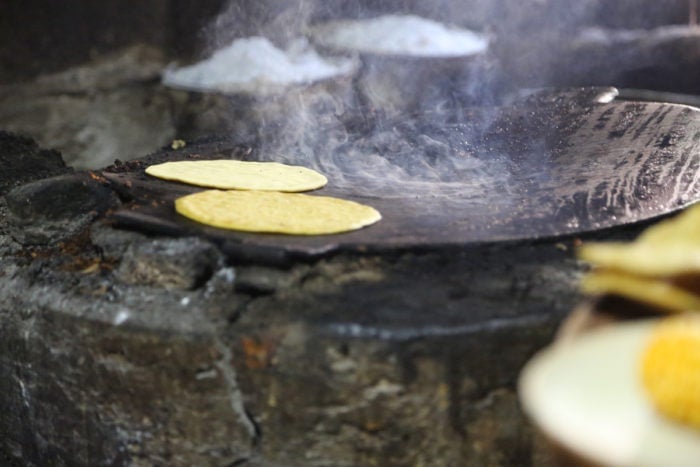
For Oaxacan agronomist Amado Ramírez Leyva, it is therefore important to distinguish between the price and true value of landrace corn. “We have to remember that the market is a false idol; a means rather than an end,” he says.
In Ramírez’s opinion, there “isn’t enough landrace corn to feed everyone. The individual farmer who has grown it thus has the right to eat as much of it as he wants, and can then sell what’s left over to those who can afford it. And if more people want it, they will either have to find a way of farming it themselves, or do without.”
Ramírez is quick to insist that whether we’re lucky enough to consume landrace corn or not, we share a duty to “acknowledge their immeasurable historical, cultural, and biological value.”
“All of this work on supporting sales of landraces in the US, either US or Mexican, is to support small farmers,” Willcox says. “That’s the bottom line, because corn is so dependent on the farmer for conservation.”
This article originally appeared on Civil Eats.